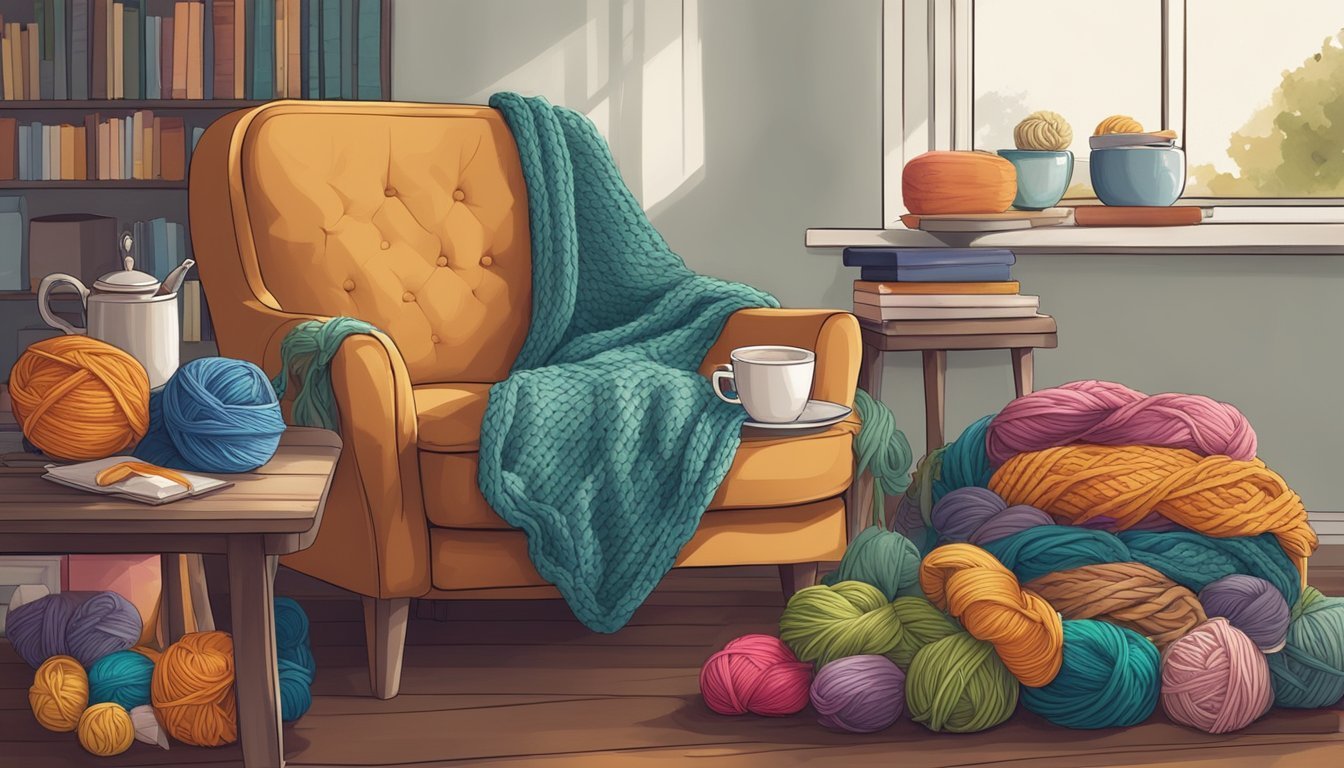Knitting is a rewarding hobby that can bring creativity and relaxation into your life.
Whether you’re just starting or looking to refine your skills, taking on specific projects can help you learn the craft more effectively. Engaging with varied knitting projects not only enhances your technique but also keeps you challenged and motivated.
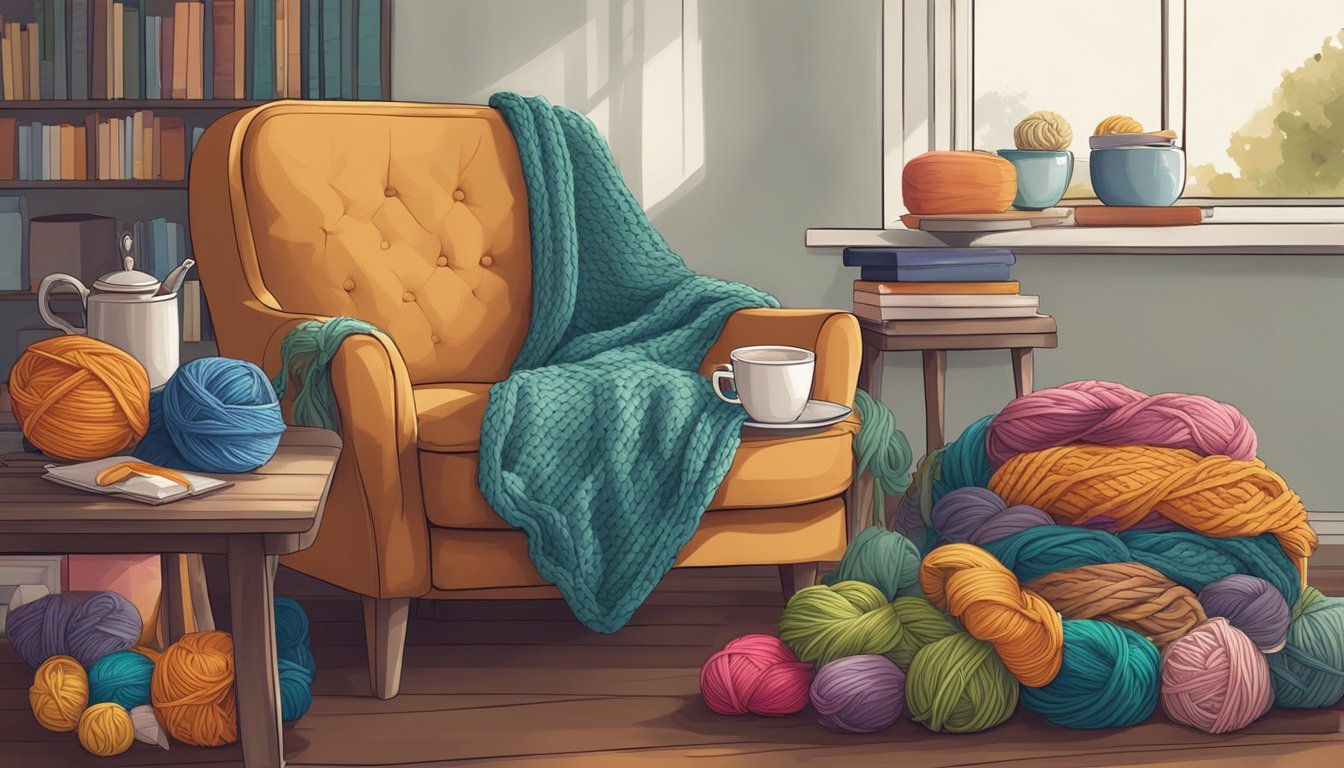
As you work through different patterns, you’ll discover new stitches and techniques that will improve your overall knitting ability.
These projects are designed to build your confidence and help you understand key concepts in knitting.
With each completed project, you’ll be one step closer to mastering this enjoyable craft.
1) Cable Knit Scarf
A cable knit scarf is a fantastic project for knitters looking to enhance their skills.
The texture created by the cables adds a unique charm, making your scarf stand out.
You can start with simpler patterns.
Patterns like the reversible cabled brioche stitch offer layers of warmth and are great for beginners.
They’re fun to knit and turn out beautifully.
If you are feeling adventurous, try the Avita Cabled Scarf.
With a short pattern repeat, you can easily manage it while watching TV or traveling.
For something cozy, the Cableton Scarf combines various cable styles with garter stitches.
The i-cord edges give it a polished finish.
Whichever pattern you choose, a cable knit scarf will teach you about stitch techniques and improve your dexterity.
Plus, you’ll end up with a stylish accessory to keep you warm.
Happy knitting!
Fair Isle Mittens
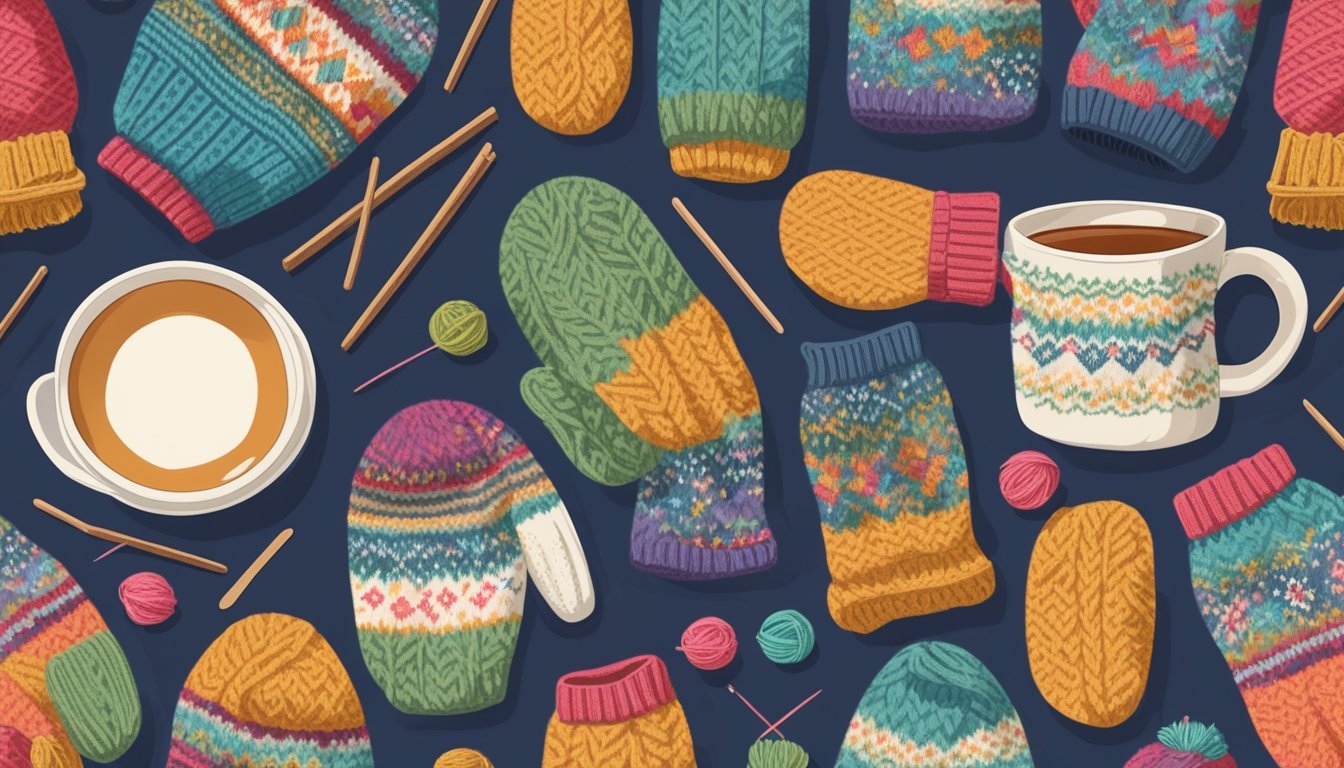
Fair Isle mittens are a great way to jump into colorwork knitting.
This method lets you play with multiple colors to create unique designs.
You’ll use one or two yarns per row, keeping your work interesting.
When knitting Fair Isle, you’ll carry the unused yarn behind your work.
This helps prevent long floats, making your mittens neat and tidy.
Aim to only carry the yarn over a few stitches, typically no more than four.
You can find many free patterns online that cater to different skill levels.
Start with simple designs that teach you the basics.
As you gain confidence, try more intricate patterns.
These mittens not only keep your hands warm but also add a colorful touch to any outfit.
They’re perfect for showing off your new skills while keeping cozy during the colder months.
Happy knitting!
3) Chunky Knit Blanket
Making a chunky knit blanket is a fantastic way to dive into knitting.
It’s not just cozy; it’s also simple enough for beginners to grasp.
You can use super bulky yarn, which helps you see your stitches clearly.
This makes it easier to correct any mistakes as you go along.
Choose a basic stitch pattern, like garter stitch, for a textured look.
If you’re feeling adventurous, try adding some color blocks or stripes to your blanket.
One of the best parts? You can knit this blanket by hand without needles.
Just use your fingers to create loops, which is both fun and relaxing.
Once you finish up, you’ll have a warm blanket perfect for chilly evenings or as a gift for someone special.
Plus, it’ll give you a sense of accomplishment as you master your knitting skills.
4) Lace Shawl
Knitting a lace shawl can be an enjoyable way to develop your skills.
These projects often use lighter yarns, which means they are perfect for warmer seasons.
You can start with simple patterns that use basic stitches.
As you gain confidence, try more intricate designs that showcase your creativity.
A triangular lace shawl, for instance, is a popular choice.
It looks great draped over your shoulders or worn around your neck.
Using a colored sock yarn can add a fun twist to your shawl.
You’ll enjoy experimenting with different color combinations and patterns.
Patterns like the “Vortex” illustrate how to create a large spiral as it expands outwards.
This can be a fun technique to master and adds dimension to your work.
The satisfaction of completing a lace shawl is rewarding.
It can be a beautiful accessory to complement your wardrobe or a thoughtful gift for someone special.
Plus, every shawl becomes unique with your personal touch.
Happy knitting!
5) Brioche Stitch Hat
Making a brioche stitch hat is a fun way to level up your knitting skills.
This project introduces you to the unique texture of brioche, which creates a lovely, stretchy fabric.
Start with a simple pattern that uses basic brioche stitches.
You’ll quickly see how these stitches create a warm, squishy fabric perfect for chilly weather.
Choose a vibrant yarn to really showcase the brioche technique.
Solid colors work well, but consider trying two contrasting colors for added visual interest.
As you knit, pay attention to how the stitches interact.
The slip and yarn-over techniques will become second nature, making your next brioche projects even easier.
Whether you opt for a classic beanie or a more slouchy style, this hat will become a favorite.
Plus, it makes for a great gift! Enjoy the process and have fun experimenting with different stitch patterns and colors as you knit.
6) Chevron Baby Blanket
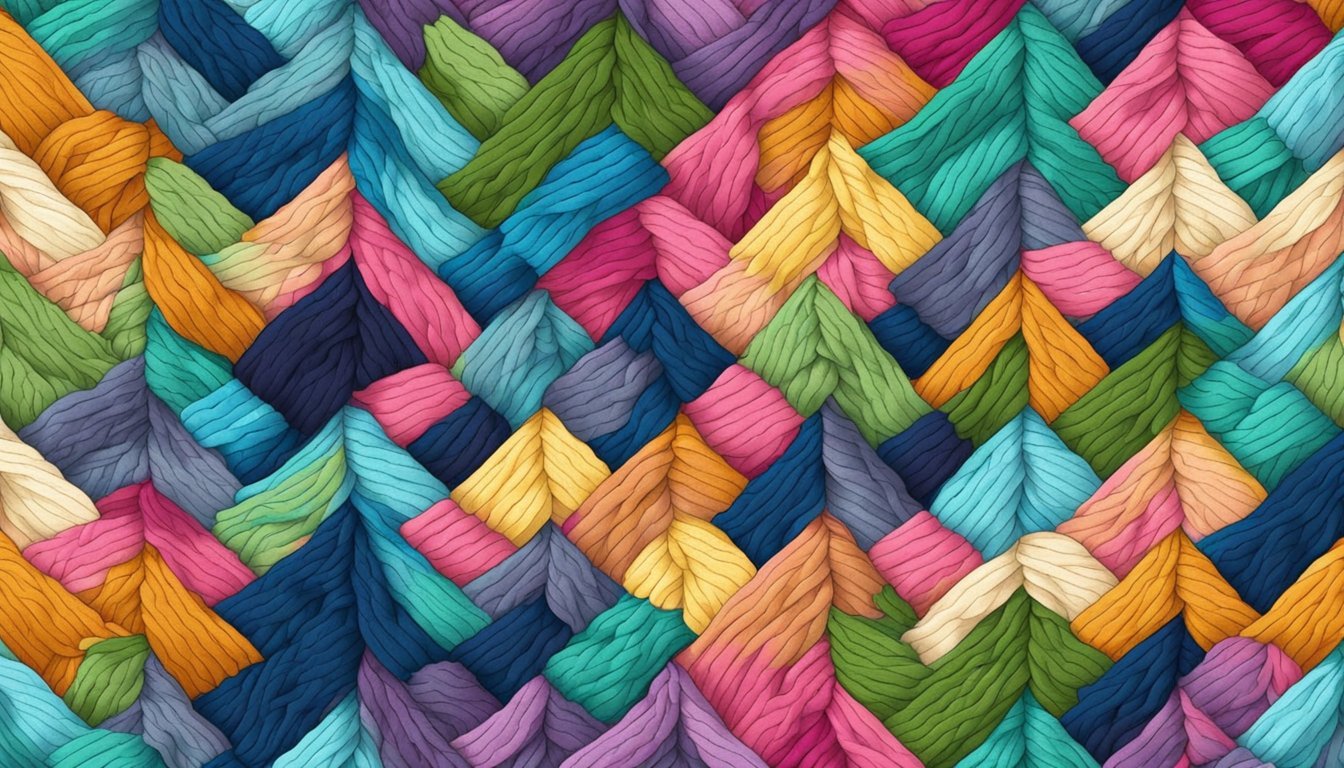
Creating a Chevron Baby Blanket is a great way to practice your knitting skills.
This design features a fun zig-zag pattern that adds color and texture to any nursery.
The beauty of this project lies in its simplicity.
You can easily memorize the chevron stitch, making it a perfect choice for both beginners and experienced knitters.
When selecting your yarn, consider using soft materials, especially for a baby blanket.
Cotton yarn is a great option since it’s gentle on the skin.
You can also customize your blanket with different color combinations.
Choose bright colors to make it cheerful or soft pastels for a more classic look.
As you knit, enjoy watching the pattern emerge.
The repetitive nature of the chevron design can be quite relaxing.
Once completed, your chevron blanket will measure about 27.5 by 36 inches, providing a lovely throw for a crib or a cozy cuddle spot.
This project not only enhances your skills but also results in a meaningful gift.
7) Colorwork Sweater
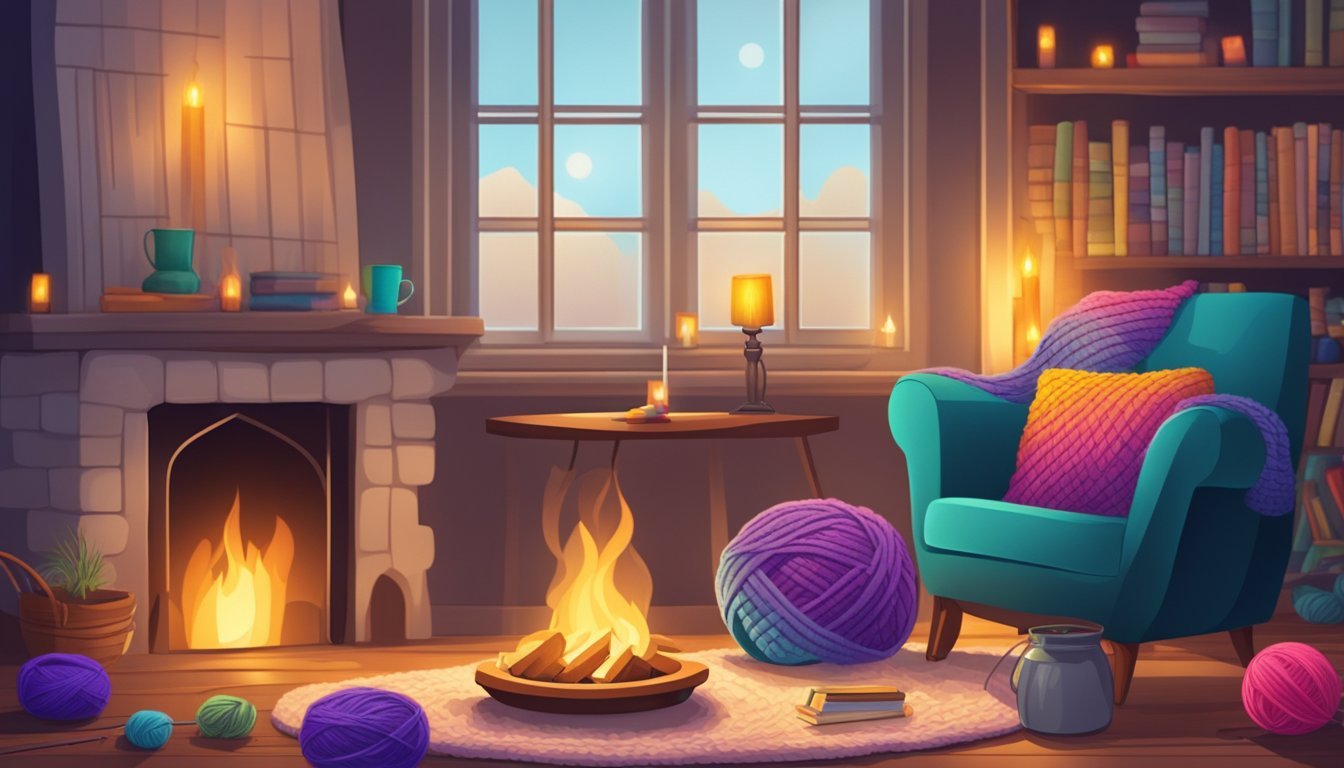
Creating a colorwork sweater is a fun way to boost your knitting skills.
You’ll get to play with various colors and patterns, making each piece uniquely yours.
Start by choosing a reliable pattern that suits your style.
Many tutorials break down the techniques, so you can follow along easily.
Consider yarn selection carefully.
Some yarns work better for colorwork, providing the texture and durability needed for your design.
As you knit, don’t stress about the technique.
Many find that using two colors in a single row becomes second nature with practice.
Make sure to check gauge to ensure your sweater fits well.
This is key to the final look of your project.
Experiment with different color combinations to find what resonates with you.
The process of choosing colors is part of the fun!
Remember, enjoy the journey of creating something beautiful that showcases your knitting talents.
Each stitch gets you closer to mastering this enjoyable technique.
Choosing The Right Yarn

Selecting the right yarn is crucial for achieving the desired look and feel of your knitting projects.
Understanding the different weights and materials can significantly enhance your experience and results.
Understanding Yarn Weights
Yarn weight affects the thickness of the fabric and the size of the needles you’ll use.
Here’s a quick breakdown:
| Yarn Weight | Description | Common Uses |
|---|---|---|
| Lace | Very thin | Shawls, delicate garments |
| Fingering | Light, fine yarn | Socks, lightweight sweaters |
| DK (Double Knit) | Medium weight | Sweaters, baby clothes |
| Worsted | Thicker, versatile | Blankets, hats, scarves |
| Bulky | Heavy and plush | Quick projects, blankets |
Choose a weight that fits your project requirements.
For instance, lightweight yarns are perfect for airy garments, while bulky yarns work well for cozy items.
Remember to adjust your needle size accordingly for the best results.
Selecting Materials For Comfort
Material choice is vital for comfort and usability.
Here are some popular yarn materials:
- Acrylic: Affordable and versatile, it’s easy to care for and comes in many colors.
- Wool: Offers warmth and elasticity, great for winter projects but may be itchy for some.
- Cotton: Breathable and ideal for summer wear, it has a soft texture and is hypoallergenic.
- Blends: Combining fibers can give you the benefits of each, like wool-acrylic blends for warmth and ease of care.
If you have sensitive skin, opt for soft materials such as superwash wool or bamboo.
This consideration ensures not only the beauty of your project but also makes it a delight to wear or use.
Mastering Knitting Techniques
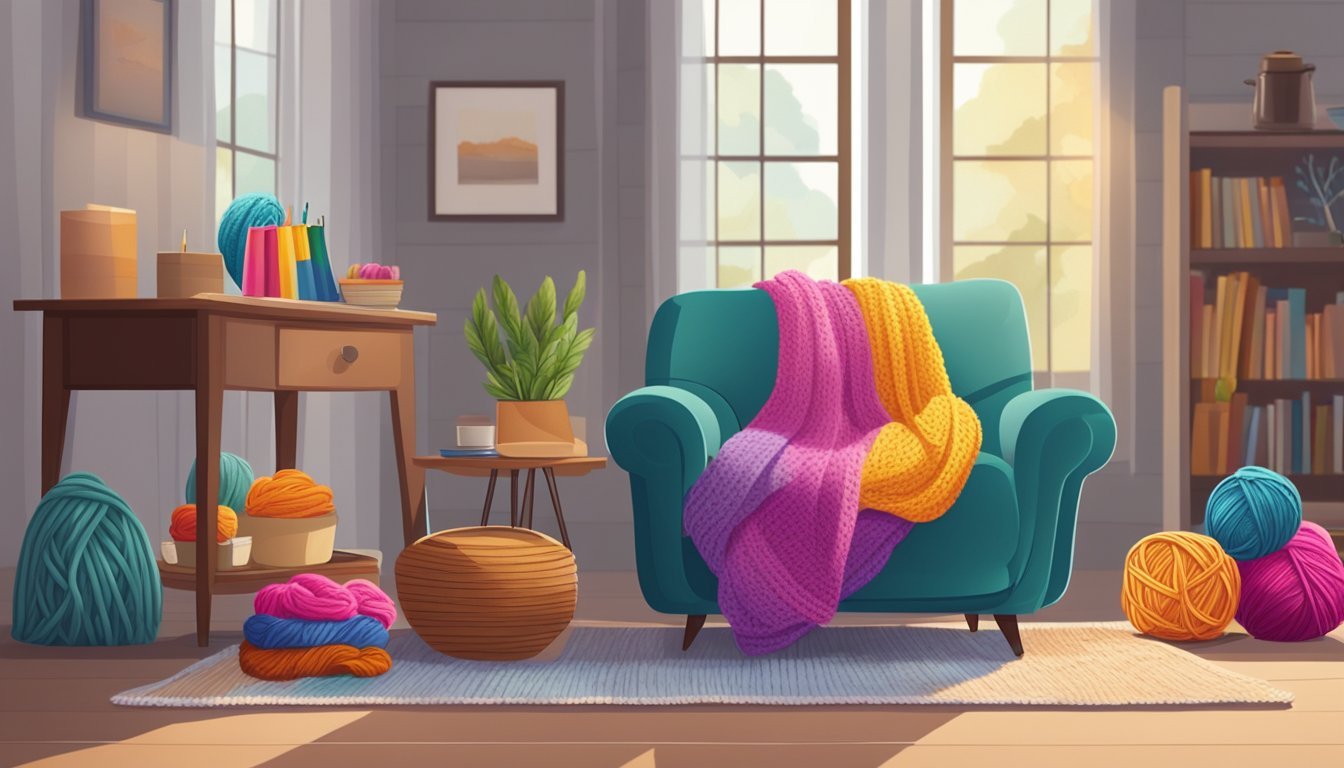
To really get the hang of knitting, it’s essential to focus on mastering both the basic and advanced techniques.
These skills will elevate your knitting projects and give you the confidence to tackle more complex patterns.
Basic Knitting Stitches
Every knitter should start with the foundational stitches.
The two key stitches you need to master are the knit and purl stitches.
Here’s a quick look at each:
- Knit Stitch: This is the most basic stitch and creates a smooth, “V” texture on your work. To knit, insert the needle into the front of the stitch, wrap the yarn around the needle, and pull it through.
- Purl Stitch: This stitch creates a bumpier texture and is essential for many patterns. To purl, insert the needle into the back of the stitch, wrap the yarn, and pull it through.
You can also practice casting on and binding off.
These steps frame your project and affect its overall look.
As you get comfortable, try combining these stitches in simple patterns like garter, ribbing, or stockinette stitch.
Advanced Techniques For Enthusiasts
Once you’ve got the basics down, it’s time to explore advanced techniques that will challenge you and enhance your skills.
Here are a few worth trying:
-
Increasing and Decreasing: You can learn how to add and remove stitches to shape your projects. Techniques like yarn over and knit two together (K2tog) are great starting points.
-
Colorwork: Practice techniques like Fair Isle or intarsia to experiment with color. This adds dimension and visual interest to your projects.
-
Binding Off: You can master various methods, such as stretchy or invisible binding off. Each technique offers a different finish that can complement your design.


